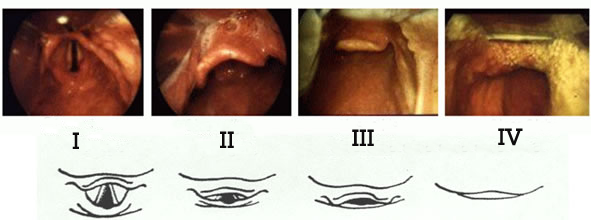
Lit of the Week – 2/2/16
Clinical question / background:
- Can an airway assessment score based on the LEMON method detect difficulty at intubation (Cormack and Lehane Grade 2-4) in the ED?
Design:
- Prospective observational study
- 156 patients in ER population, 1 UK teaching hospital
- Inclusion: Adult patients requiring intubation
- Exclusion: None
- Patients’ airways evaluated using LEMON criteria and given points (0-10)
- Look (4 criteria used, 1 point each) – max 4 points
- Signs of airway trauma, large incisors, large tongue, presence of beard
- Evaluate 3-3-2 rule – max 3 points
- Interincisor distance (3 finger breadths), mentum to hyoid, (3 finger breadths) floor of mouth to thyroid notch (2 finger breadths)
- 1 point for each
- Mallampatti class – max 1 point
- 1 point for either class III / IV
- Obstruction – max 1 point
- ex epiglottitis, PTA, trauma, blood, FB
- Neck Mobility – max 1 point
- Chin to chest, extension so as to look at ceiling
- At time of intubation, Cormack and Lehane Laryngoscopy Grade Score was recorded to objectively determine difficulty of intubation
- A difficult intubation was a Cormack and Lehane grade 2,3, or 4
- Look (4 criteria used, 1 point each) – max 4 points
Results:
- Of the above LEMON criteria, patients with large incisors (p <0.001), reduced inter-incisor distance (P<0.05), or a reduced thyroid to floor of mouth distance (P<0.05) were each significantly associated with more difficulty laryngoscopic view
- Patients with high airway score (median score 2) more likely to have poor laryngoscopic view compared to lower (median score 1)
- 114 Patients with C/L Grade 1, 42 C/L Grades 2-4
Take-home:
- Airway assessment score based on LEMON method can stratify risk of increased intubation difficulty
- Major criteria were incisor distance, floor of mouth to thyroid distance, and presence of large incisors
Strengths:
- Simple, designed to target ER patient population
Weaknesses / Critiques
- Same practitioner performed LEMON assessment and intubation which may have led to bias
- Interobserver variability in determining LEMON scores
- Subjective terms such as ‘large incisors’
- Difference between airway score for the two groups was only 1 point
Follow-up / Real World Application
- Cormack and Lehane Views
- Grade 1 – complete glottis visible
- Grade 2 – posterior glottis and arytenoid cartilage only
- Grade 3 – epiglottis only
- Grade 4 – no epiglottis or laryngeal structures visible
—————————————
Paper #2
Clinical Question / Background
- What are the predictors of difficult and impossible bag-mask ventilation in patients undergoing intubation during general anesthesia?
Design
- Prospective observational study
- 22,660 BVM attempts at a large academic surgical center
- Inclusion: all adult patients undergoing general anesthesia
- Exclusion: none
- Primary outcome: ease or difficulty of BVM defined as below
- Four-point scale ranging from grade 1 to 4 used to objectify difficulty of BVM with Grades 3 and 4 defined as difficult and impossible, respectively
- Grade 1 – ventilated by mask
- Grade 2 – ventilated by mask with oral airway/adjuvant with or without muscle relaxer
- Grade 3 – difficult mask ventilation defined as BVM that is inadequate to maintain oxygenation, unstable BVM, or BVM requiring two providers
- Grade 4—impossible mask ventilation noted by absence of end tidal CO2 measurement and lack of perceptible chest wall movement during positive pressure ventilation attempts despite airway adjuvants and additional personnel
- Secondary outcomes
- Cormack and Lehane DL view, subjective assessment of difficulty of intubation defined as 3+ attempts, and ability to perform DL
- Four-point scale ranging from grade 1 to 4 used to objectify difficulty of BVM with Grades 3 and 4 defined as difficult and impossible, respectively
Results
- Incidence of grade 3 BVM – 1.4% (n=313)
- Factors statistically significantly associated with Grade 3 BVM
- BMI > 30, presence of a beard, Mallampati III or IV, age 57 or older, severely limited jaw protrusion, snoring
- Incidence of grade 4 BVM – 0.16% (n=1.4%)
- Factors statistically significantly associated with Grade 4 BVM
- Snoring, thyromental distance < 6 cm
- Incidence of grade 3 or 4 BVM + difficult intubation – 0.37% (n=84)
- Factors statistically significantly associated with Grade 3 or 4 BVM + difficult intubation
- Limited jaw protrusion, abnormal neck anatomy, sleep apnea, snoring, BMI > 30
Take Home
- Advanced age, increased BMI, presence of beard, history of snoring associated with difficult BVM
- Limited jaw protrusion associated with difficult intubation
Strengths
- Large study, powered to detect statistically significant associations between airway exam and procedural difficulty
Weaknesses
- Surgical patients optimized for intubation so does not apply as firmly to ER population
- Multiple subjective analyses
- Presence of beard is only modifiable risk factor that was found
- Lack of control or uniform conditions applied to all BVM attempts
